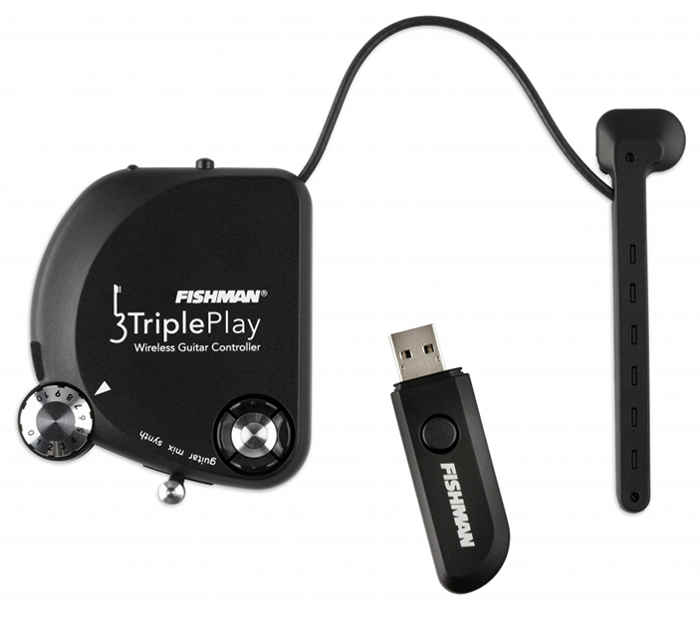Let’s explore the three main options for high-tech guitars
Guitars are great, but sometimes you’ll want to extend your sonic palette. However, before you get too excited, note that aside from modeled guitars, there will always be a compromise required in your playing—the ability to recognize audio notes and convert them to data suitable for driving synthesizers is not perfect. Still, these devices extend what you can do with a guitar, and for some types of sounds (particularly pads), give excellent results.
MIDI GUITAR
This type of guitar uses a hex pickup to convert each string’s audio into control signals that send pitch and dynamics data to MIDI synthesizers (either onboard, or external). Limitations are tracking—the accuracy with which the conversion process follows your playing—and latency, as it takes time to analyze a note before generating a control signal. MIDI guitars let you play instruments like piano, saxophone, etc. from your guitar, although it requires practice to play cleanly enough to get good triggering. Guitar synth latency can be as much as several dozen milliseconds for the lower strings. Popular models include the Roland GR-55 guitar synthesizer (Fig. 1). If your guitar already has a hex pickup, you can buy just the GR-55, or a bundle with the GR-55 and a suitable pickup.

There are several options to retrofit existing guitars with a MIDI output. The Fishman TriplePlay (which is also wireless; see Fig. 2) is popular, while Roland’s GK-3 hex pickup is somewhat of an industry standard.

SYNTH GUITAR
If you don’t want to deal with MIDI-oriented hardware, a synth guitar will analyze your guitar’s audio output and drive a synth directly. The Boss SY-300 floor box is latency-free, doesn’t need a special pickup, and unlike similar devices made years ago, is polyphonic. Sonuus’s G2M is a compact, low-cost audio-to-MIDI converter, but is monophonic only. However, it works with guitar, bass, and since version 3, voice. There are also software solutions, like Jam Origin for polyphonic conversion, and MiGic for monophonic conversion. Both have trial versions available so you can decide if they work for you.
MODELING GUITAR
The Line 6 Variax line of guitars (from standard to “designer” models, as shown in the feature image) also uses a hex pickup, but doesn’t convert the signal to MIDI, or drive synthesizers. Instead, it applies sophisticated signal processing to emulate a variety of classic guitar sounds. There are no tracking issues because it works on the string signal itself, and latency is not an issue. Unlike MIDI guitar, the Variax can accept any playing style, and handles techniques like hammer-ons or different picking angles. If your priority isn’t creating synthesizer sounds, but emulating a wide variety of guitar sounds in a self-contained instrument that nails those emulations, the Variax is ideal. However, there’s no way it can drive external sound generators, other than feeding the audio into something like an SY-300 or the Jam Origin software.
